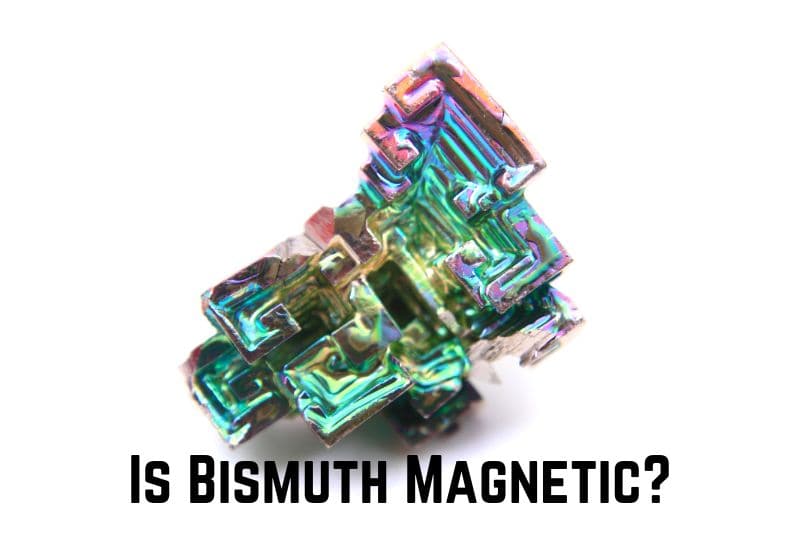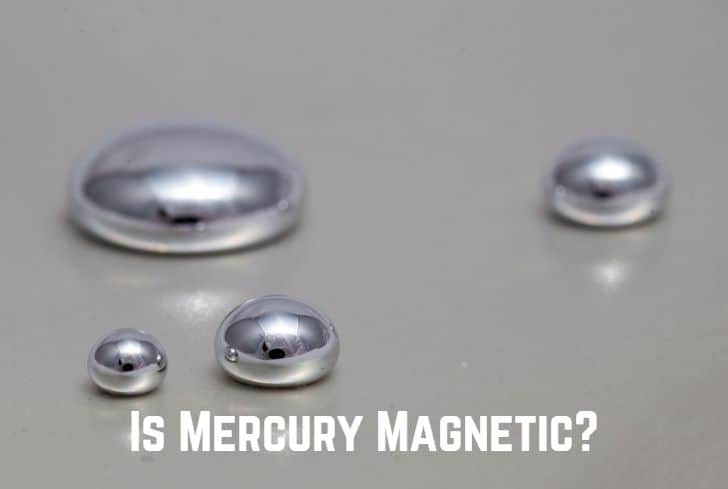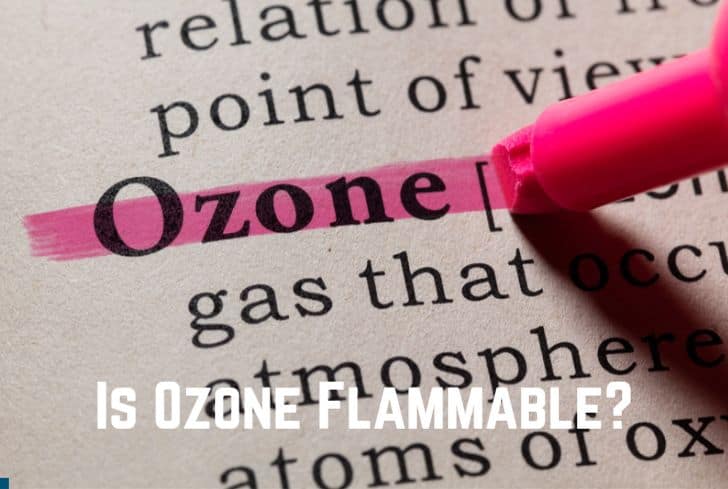Is Bismuth Magnetic? (No Way)

Bismuth is a naturally occurring element as common as silver in the crust of the Earth. Ancient Egyptians used it for cosmetic purposes. In modern-day bismuth crystals makes beautiful jewelry. It has become popular across multiple industries because of its unique properties. But is bismuth magnetic?
It is one of the questions we shall answer, in addition to describing the uses and properties of bismuth. In this article, we’ll also describe bismuth and explain if it’s a metalloid, flammable, or a good conductor of electricity.
Read: Is Magnetite Magnetic? (Answered)
What is Bismuth?
Bismuth is a naturally occurring white, crystalline metal with a reddish tint. Silver, tin, nickel, and cobalt sulfide ores have crystals. Most bismuth production comes from the smelting of lead and copper. “Wissmuth,” which means white mass in German, is the origin of its name. Bismuth also has the Latin word “bisemutum”.
Due to their striking similarities, bismuth is sometimes mistaken for tin and lead. That is until the distinction was demonstrated by Claude Geoffrey Junine, credited with discovering it in 1953. Bismuth was once thought by miners to be a step in producing silver from inferior metals.
It dissolves in highly nitric air but is stable to oxygen and water. The two main ores of bismuth are bismuthimite and bismite. The USA is the primary location for the production of bismuth. However, it is also mined in Japan, Mexico, Canada, Bolivia, and Peru.
Can Magnets Attract Bismuth?
No, magnets cannot attract bismuth. In its solid state, it is diamagnetic material. Diamagnetic denotes the opposite of magnetic. No unpaired electrons exist in bismuth. Bismuth produces a magnetic field that resists and repels an external magnetic field.
The magnetic field repels and does not magnetize bismuth. However, bismuth develops a liquid state under specific high pressure and temperature conditions and acquires ferromagnetic properties.
A ferromagnetic element generates a strong magnetization in the direction of the magnetizing field. They travel from a weaker to a stronger area of the magnetic field because they are attracted to magnets very strongly.
Magnetic levitation is one of Bismuth’s most well-known abilities. The process suspends things in space using nothing but magnetic fields as support. Maglev trains, compressors, pumps, motors, and wind turbines are examples of practical applications for magnetic levitation.
A simple demonstration of bismuth magnetic levitation.
Arsenic, phosphorus, antimony, and nitrogen are all found in Group 15 and Period 6 of the periodic table, along with bismuth. However, compared to antimony or arsenic, bismuth has more apparent metallic properties.
Is Bismuth a Good Conductor of Electricity?
Bismuth is not a good conductor of electricity. It has a high electric resistance compared to other metals that are good electrical conductors. Its outermost shell has five electrons. However, since bismuth electrons are in a stable state, very few of them participate in the conduction of electricity. The availability of electrons that can participate in conduction affects an element’s electrical conductivity.
Free electrons are readily available in good conductors. Enough energy is necessary to overcome the neutron-electron interaction and allow the electric flux to pass through it.
Is Bismuth a Metalloid?
Bismuth is a metalloid. Most people believe that bismuth is a metal because of its physical characteristics. However, bismuth tends to be a metalloid because it possesses several qualities that are normally not connected to metals. Brittleness, poor thermal conductivity, a low melting point, and low tensile strength are examples of these non-metallic properties. Hence, bismuth possesses both metallic and non-metallic properties.
Elements known as metalloids combine the properties of metals and non-metals.
Is Bismuth Flammable?
Bismuth is not flammable. It neither supports combustion nor does it catch fire. Bismuth has excellent fire resistance due to its low thermal conductivity and high electrical resistance. Because of this property, bismuth is a thermal insulator in high-pressure situations. Electrical fire risk reduces because of its high electrical resistance, limiting the passage of electric current.
Bismuth application is paramount in materials and products due to its inflammability.
- Bismuth creates fireproof coatings that, when applied to surfaces, create a protective layer that prevents the spread of fire.
- Manufacturers include bismuth alloys to increase the fire resistance of doors and partitions. The structures serve as barriers, slowing the fire’s progress and giving you time to evacuate.
- Electrical wiring uses its alloys to lower the risk of electrical fires. Bismuth has a low electrical conductivity, which helps keep systems from short-circuiting and overheating.
Properties of Bismuth
Bismuth has the symbol Bi and is a chemical element. It is among the rare elements whose density in the liquid state is higher than in the solid form. The greatest increase in electrical resistance occurs when you place bismuth in a magnetic field, which is the strongest Hall effect of any metal.
However, bismuth has many additional properties, which we highlight in the table below.
| Physical properties | Chemical properties |
| -It is a pinkish-tinted, white, brittle, crystalline metal. | -Atomic number (83) and atomic mass 208.9804 g.mol -1. |
| -It has a high electrical resistance. | -At 20 °C, it has a density of 9.80 g.cm-3. |
| -When bismuth salts are dissolved in water, they produce insoluble compounds. | -Bismuth possesses 126 neutrons and 83 protons/electrons. |
| -Apart from mercury, its thermal conductivity is lower than any metal. | -It has a boiling point of 2588°F (1420°C) and a melting point of 519.8°F (271°C). |
| -As it freezes, it expands. | |
| -Not regarded as toxic. |

Uses of Bismuth
Around 1500 AD, the South American Incas used bismuth as an alloying metal in bronze. They discovered it as a native metal rather than mining it as an ore. Because it is one of the less toxic heavy metals, bismuth has numerous applications in various industries. As can be seen in the list below, bismuth has a variety of uses.
Pharmaceutical uses
Antiacids, and stomach medications contain bismuth salts (basic bismuth carbonate, subsalicylate, and sub-sulfate of bismuth). Bismuth subsalicylate, an ingredient in products like Pepto-Bismol, coats the stomach lining and intestines.
Thus, lowering inflammation also lowers digestive illness symptoms like diarrhea, vomiting, and nausea.
Targeted alpha therapy uses the therapeutic radionuclide bismuth-213 to treat various diseases.
Cosmetics
The chemical compound bismuth oxychloride, a white crystalline powder, is a pearlescent pigment in the cosmetics industry. This pigment is responsible for the shimmering, pearl-like finish that cosmetics like nail polish, eye shadow, and lipsticks have.
Additionally, bismuth oxychloride can add bulk and an attractive gloss to cosmetics products. Additionally, it is hypoallergenic and non-toxic. The oxychloride does not bring on not cause irritations and other allergic responses.
The U.S. Food and Drug Administration (FDA) has authorized bismuth the use of oxychloride in cosmetic goods.
Manufacturing materials
Compounds of bismuth are effective and practical tools used in producing several materials. Several are highlighted below:
- Its components serve as catalysts in producing acrylonitrile, a raw material for synthetic fibers like polyethylene, polypropylene, and polyamide.
- Used in producing fishing sinkers, reduced toxicity bird shot, fusible alloys, and low melting solders.
- Bismuth often acts as a substitute for lead when making shots and shotguns. In doing so, the possibility of lead contamination of the streams popular for bird hunting reduces.
- Bismuth alloys with low melting points are used in heat-resistant electronics. These consist of sprinkler systems, boiler plugs, and fire alarms.
- As it can reveal the presence of granitic intrusive centers and discordant structures that concentrate on lode gold mineralizing systems, it is used as a gold pathfinder element.
- Manufacturers replace hazardous lead with safe bismuth metal because they have similar densities and traits.
Jewelry
Bismuth is a metal that is becoming more popular for creating eye-catching jewelry designs. It can be cast into various shapes and forms due to its comparatively low melting point. The metal bismuth produces striking crystal forms when combined with other metals.
Unique crystals and jewelry, including rings and necklaces, are made from melted pure bismuth.
Conclusion
When bismuth is liquid, it loses its diamagnetic properties and turns ferromagnetic. It is also neither flammable nor a good conductor of heat. Given that it has both metallic and non-metallic qualities, bismuth is a metalloid.
Among many different applications, some of its uses include the creation of jewelry, medications, cosmetics, and fire alarms.
Read: Is Silicon Magnetic? (We Have Answer)
Frequently Asked Questions?
Can bismuth be toxic?
Although bismuth is considered non-toxic, prolonged use could have unfavorable side effects. Bismuth salts are insoluble. Hence, when consumed for gastrointestinal disorders, they can become toxic.
They are not easily absorbed because they are insoluble. As a result, 90% of ingested bismuth is eliminated in the urine, with the kidneys holding the largest percentage. Acute renal damage can result from bismuth compounds when taken in high concentrations. Despite this, there is no proof that bismuth causes cancer.
How to tell if Bismuth is real?
Pure bismuth is easily broken and reveals a lovely shine within. Pure bismuth can be melted using a regular blow torch. Its color is metallic-white with a little hint of pinkish or reddish hue. However, this color can only be seen on a surface that hasn’t been tarnished. Bismuth oxidizes to a yellow or a dark gray color.






